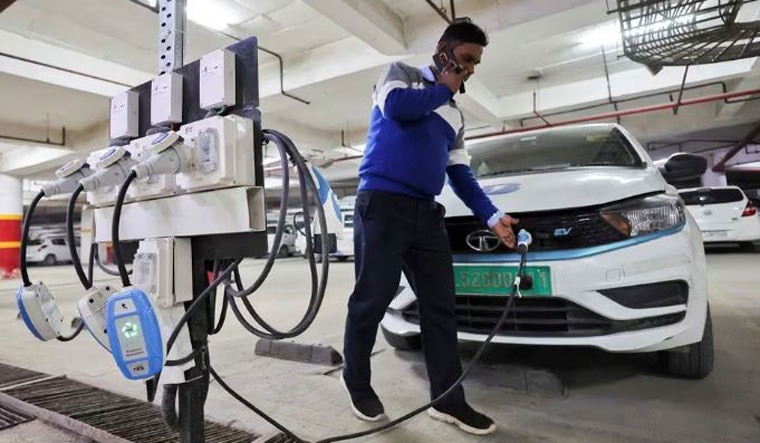With a new government in power at the Centre, India’s electric vehicle (EV) industry is awaiting a fresh instalment of an incentive package to save it from the morass it has sunk into.
The good news? It is very much on the cards, as part of Modi 3.0’s 100-day Plan, and could well be announced at the earliest.
Just as well, because the expiry of the previous instalment of the incentive package, called ‘Faster Adoption and Manufacturing of Electric and Hybrid Vehicles in India’ or FAME, had seen electric two-wheeler sales plummeting. In fact, when government slashed subsidy from 40 per cent to 15 per cent of a vehicle’s price last year, EV sales had dropped by as much as 50 per cent, by some estimates.
When FAME-I was first introduced back in 2015, it spurred a 600 per cent growth in EV sales, though on a minuscule base.
However, EV sales had flatlined since the slash in subsidy last year and the eventual expiry of FAME-II on March 31. Unable to announce a new package due to the election model code of conduct being in place, the government had announced a four-month stop-gap arrangement called Electric Mobility Promotion Scheme (EMPS), with a fund of 500 crore rupees.
“Expiry of FAME-III is the only reason (behind the drop in electric 2W sales). With EV adoption, we are talking of a long-term shift. There will always be some little bit of ups and downs along the way,” said Prtitesh Talwar, president of Lectrix EV, a company that manufactures electric two-wheelers as well as storage solutions.
“Ultimately, conversion will happen. In fact, when I look at our data, I am surprised — so many of our sales, as much as 70 per cent, are happening in tier-2, tier-3 towns, not in metros like Bengaluru!”
While adoption is picking up pace, sales going up and down based on FAME incentives (falling when the subsidy is cut and growing when new measures are announced) will weigh on the government’s mind while rolling out FAME-III, expected soon. Initial estimate is an outlay of Rs 10,000 crore meant as subsidies for electric two-wheelers, electric three-wheelers and electric buses.
To be initially valid for two years, FAME-III is likely to support electric bus buying by government departments and state road transport corporations. It is unlikely that subsidy will be provided for electric cars, though there is a demand for the same from industry quarters.
The bigger question will be what fresh categories would find place in FAME-III — hybrid cars are a possibility, while many have felt that rather than just subsidising sales, the scheme should look at larger issues of the electric mobility sector.
“While incentives are crucial to the industry, we expect FAME-III to include certain measures to alleviate the concerns faced by the industry, such as a higher proportion of incentives for charging infrastructure, dedicated incentives towards research and development, as well as expansion towards commercial vehicles,” said Saurav Kumar, partner with the law firm IndusLaw.



